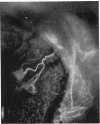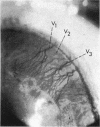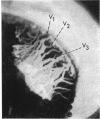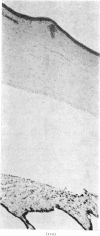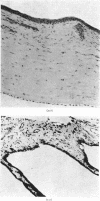Abstract
The argon laser set at 50 mum, 100-150 mW, o-2 s occluded corneal blood vessels in pigmented Dutch rabbits provided the corneal responsible for inducing vascularization was inactive. After arterial treatment with the argon laser retrograde flow in untreated veins was demonstrated by fluorescein angiography. Therefore all corneal new vessels should be treated, not just arteries. Minimal iris damage complicated the laser therapy, but this was not thought necessarily to contraindicate the use of the argon laser to treat corneal blood vessels in man. The iris damage was associated with outpouring of aqueous from the ciliary processes, and it took up to a week for the blood-aqueous barrier to return to its normal state.
Full text
PDF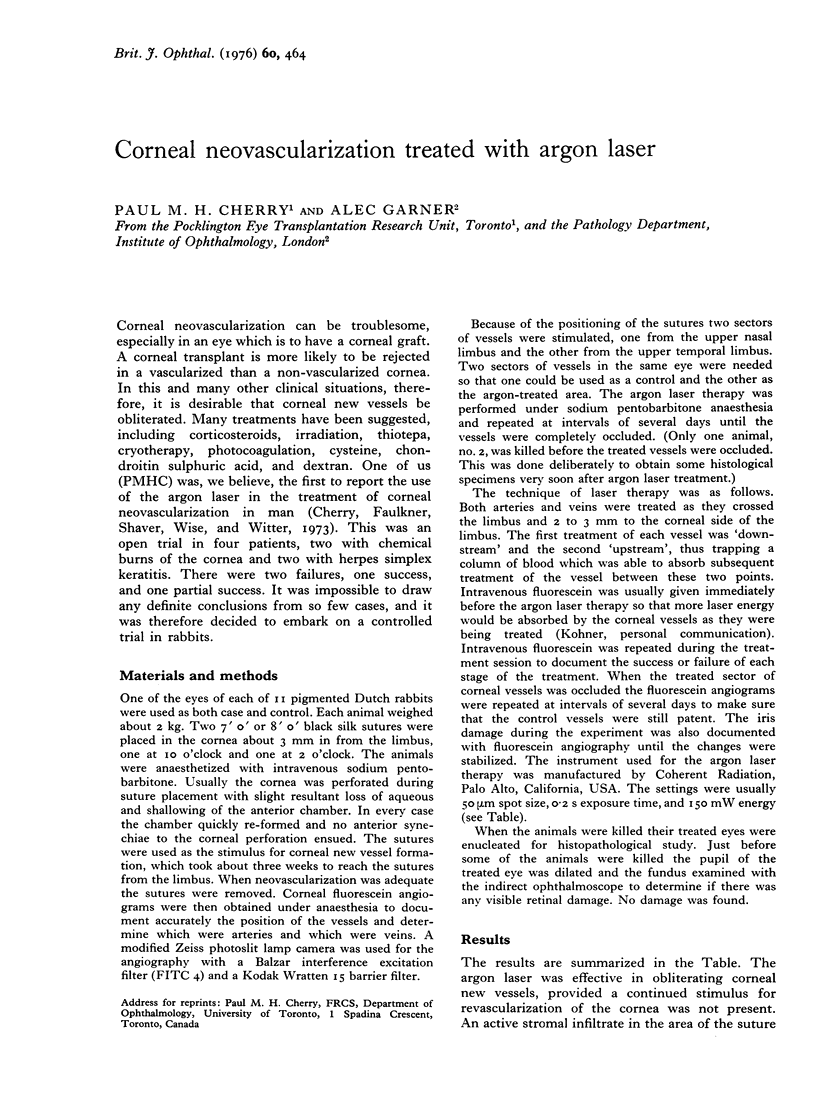
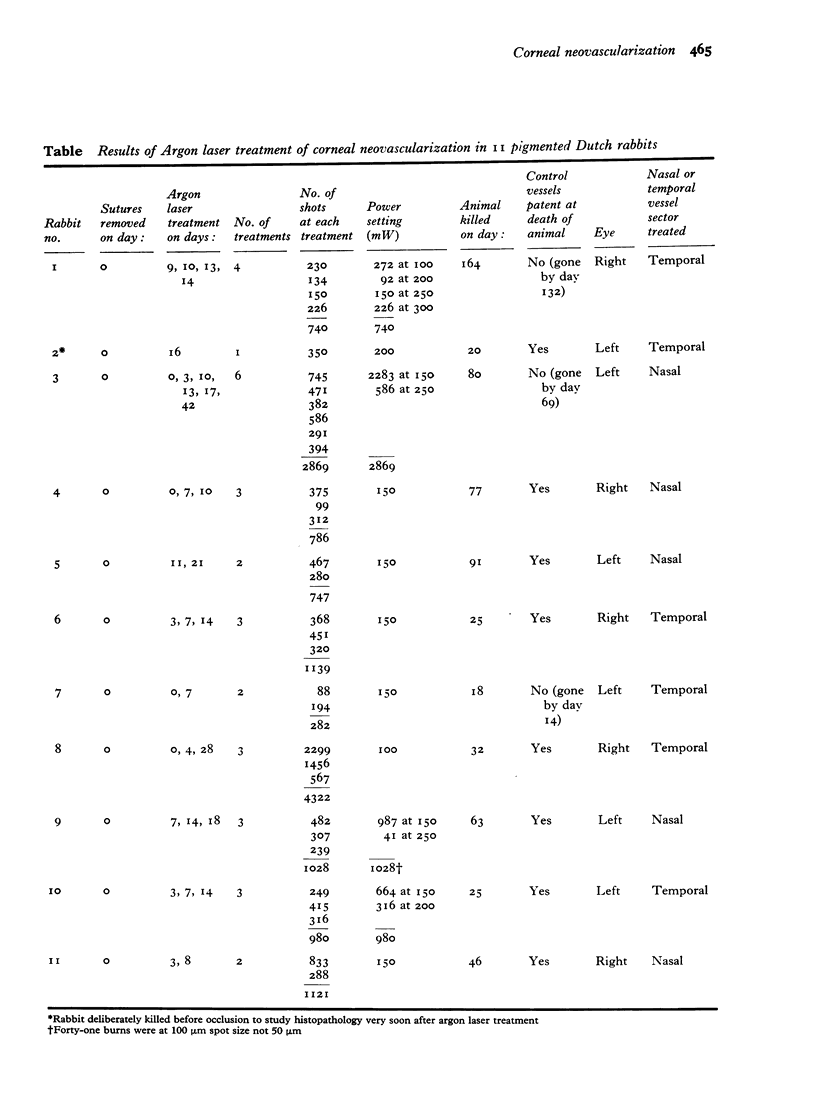
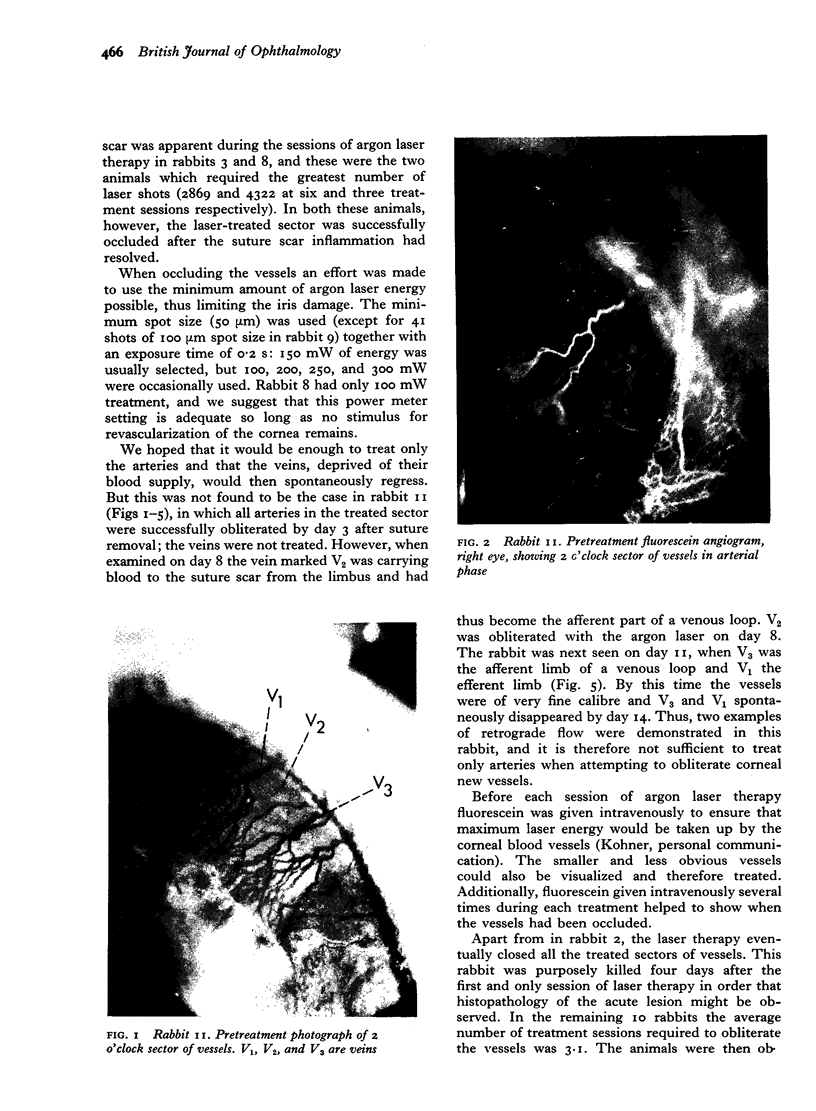
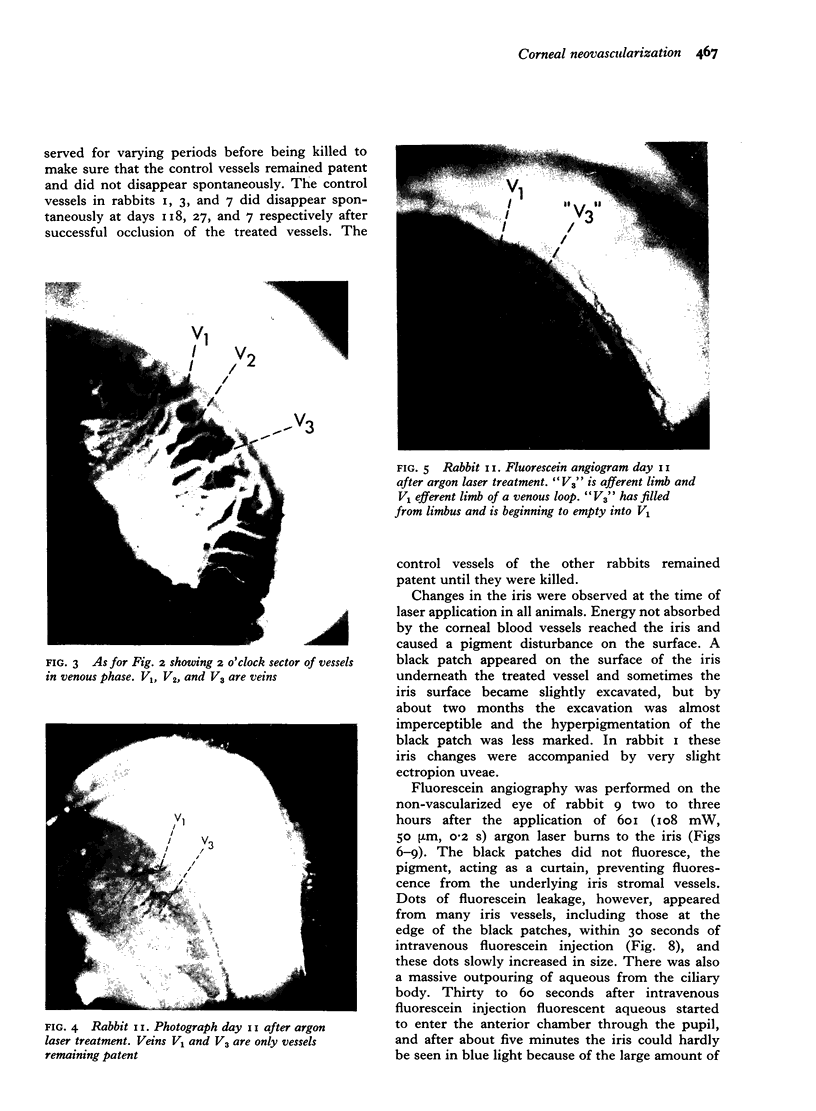
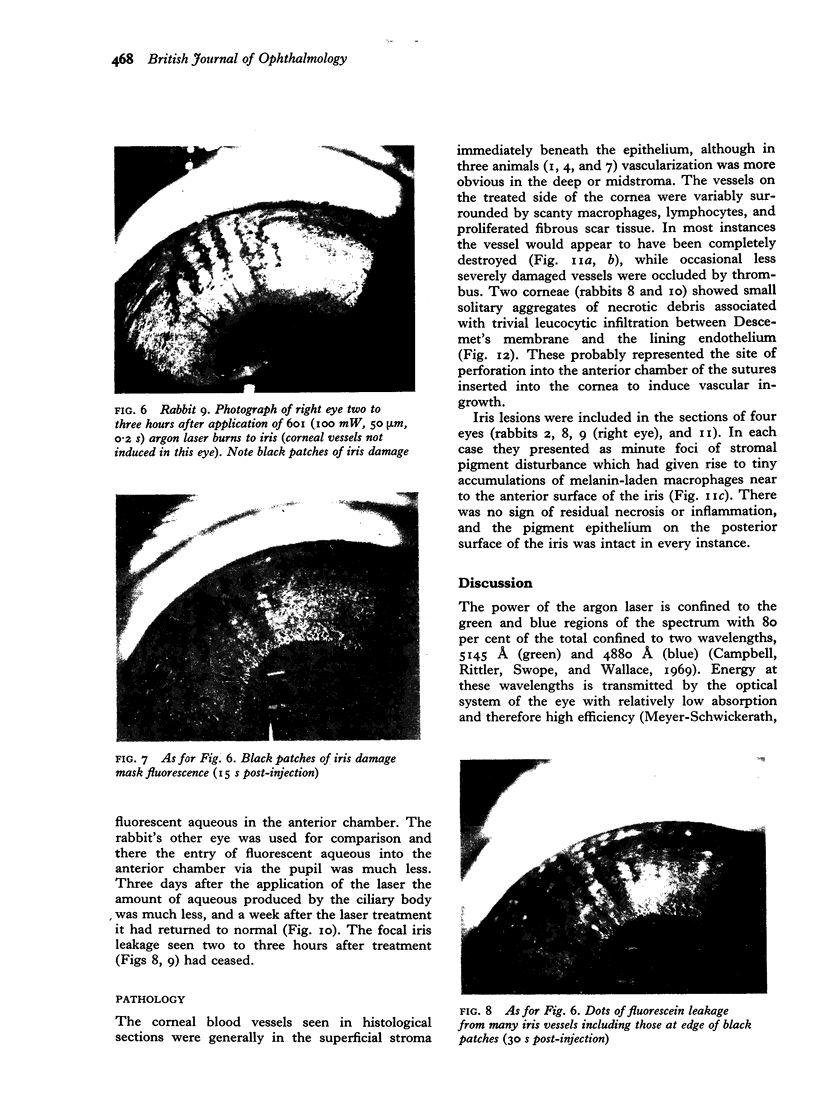
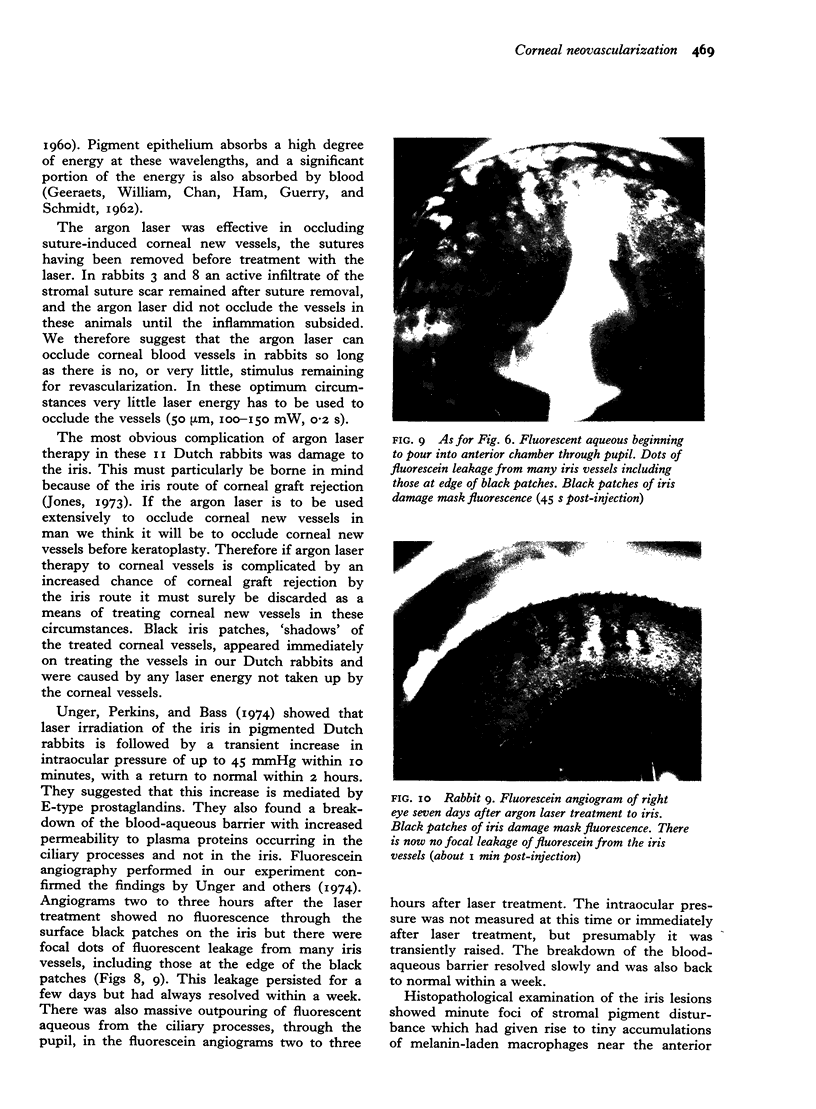
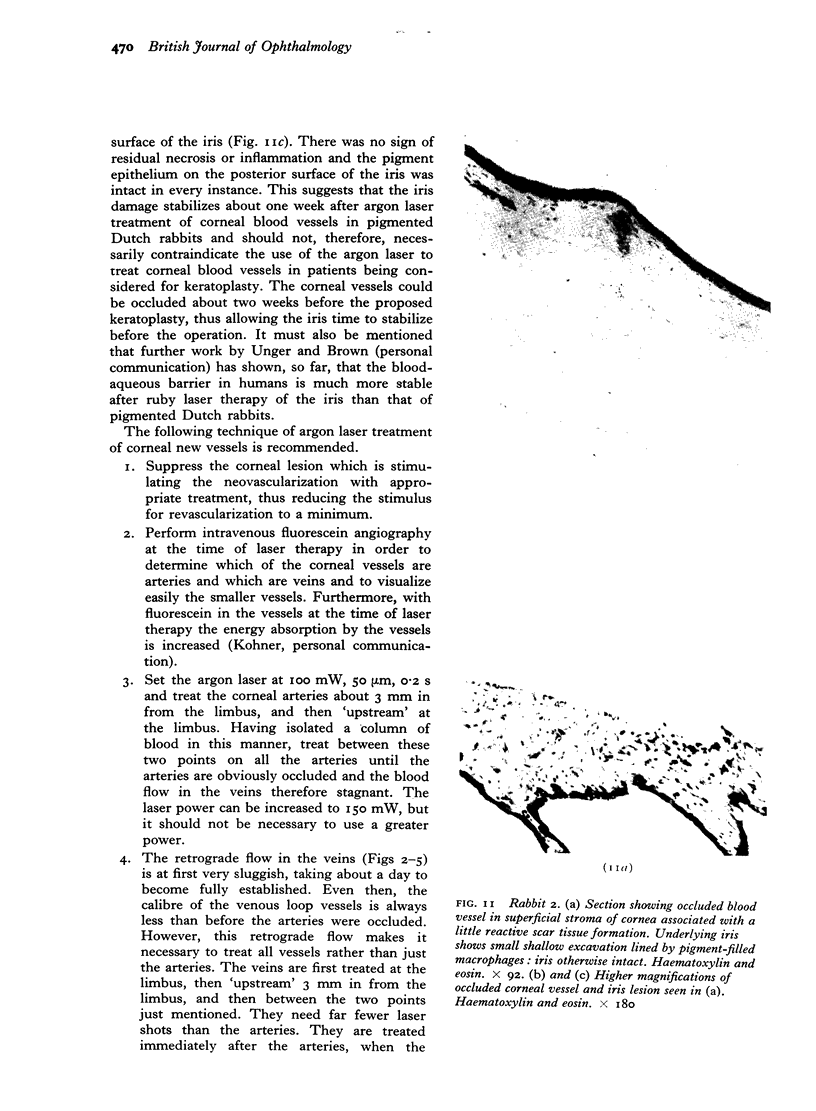
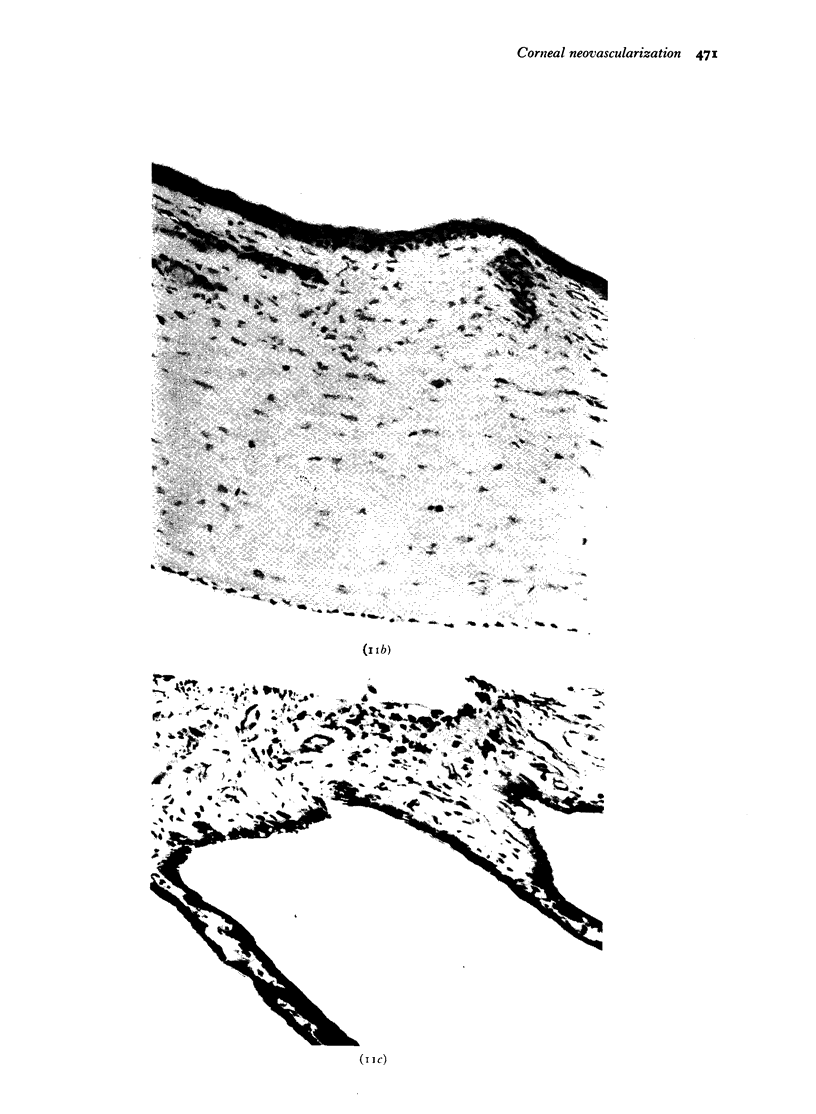
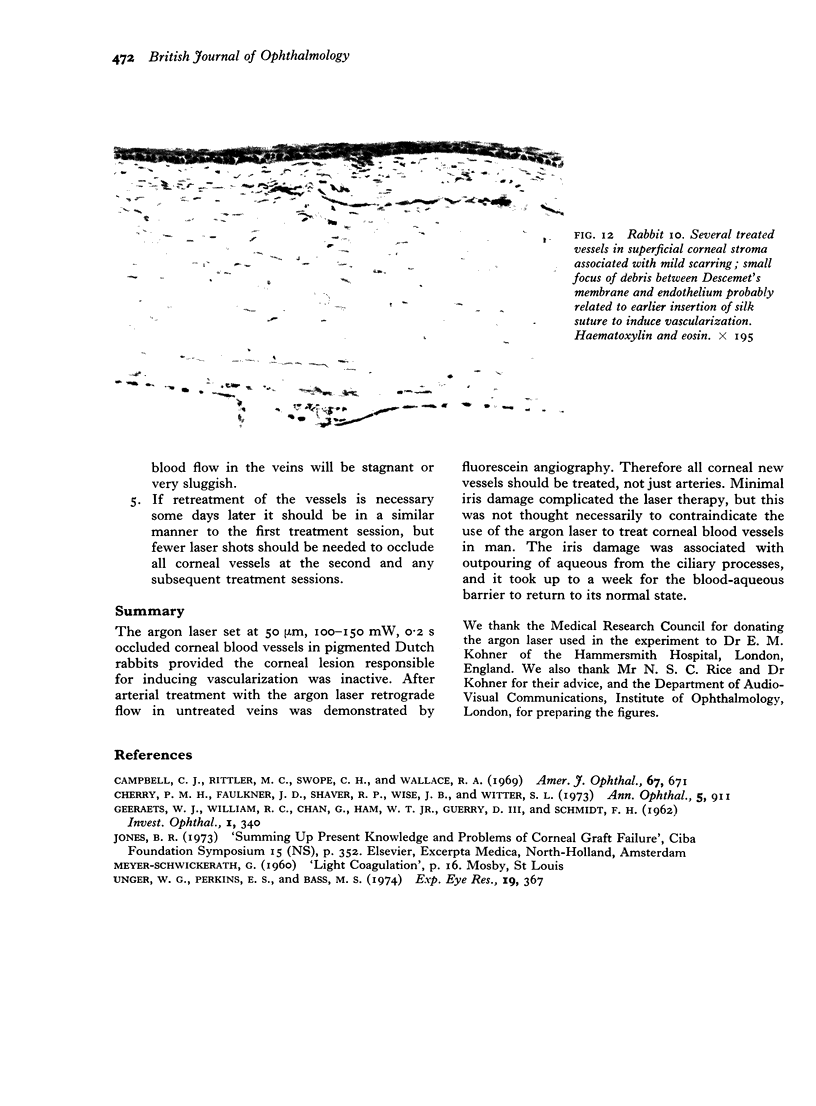
Images in this article
Selected References
These references are in PubMed. This may not be the complete list of references from this article.
- Campbell C. J., Rittler M. C., Swope C. H., Wallace R. A. The ocular effects produced by experimental lasers. IV. The argon laser. Am J Ophthalmol. 1969 May;67(5):671–681. doi: 10.1016/s0002-9394(69)90989-1. [DOI] [PubMed] [Google Scholar]
- GEERAETS W. J., WILLIAMS R. C., CHAN G., HAM W. T., Jr, GUERRY D., 3rd, SCHMIDT F. H. The relative absorption of thermal energy in retina and choroid. Invest Ophthalmol. 1962 Jun;1:340–347. [PubMed] [Google Scholar]
- Unger W. G., Perkins E. S., Bass M. S. The response of the rabbit eye to laser irradiation of the iris. Exp Eye Res. 1974 Oct;19(4):367–377. doi: 10.1016/0014-4835(74)90022-0. [DOI] [PubMed] [Google Scholar]



